Fractal Design Dynamic X2 GP-12 PWM in detail
Sometimes they don’t even get a chance and are immediately replaced by other, “better” ones. We’re talking about fans that come pre-installed in computer cases. We are going to test one of them now and although there are reasons to replace the Dynamic X2 GP-12 (PWM), be careful not to end up being worse off. After all, these aren’t exactly ordinary fans. They even have more specific aerodynamics and acoustics modifying features.
What are the reasons for throwing the included fans out of the case? Apart from failure, it is usually because the minimum speed is too high and thus the noise level is higher than required or because of motor rattling, rumbling or just out of conviction (or ignorance?) – the supplied fan has to be “no good”.
The Fractal Design Dynamic X2 GP-12 is one of the fans that often appear in cases. Usually though in DC control variants, the PWM model we’re going to test now is no different in other elements. Sure, the Dynamic X2 GP-12 may have a higher minimum speed, but otherwise the rotor and motor are the same. So you just have that extra PWM controller.
The fan format is 120 mm with a thickness of 25 mm. The basic rotor shape with seven wide blades can also be considered standard. However, there are two details on them that should increase aerodynamic efficiency while reducing noise. Or more precisely while balancing the frequencies of the sound spectrum.
Just (2 mm) behind the leading edge is a 0.3 mm high and 0.9 mm wide protrusion that extends the full length of the blade. This should moderate turbulent flow at the intake, allowing more air to flow through the fan. It will definitely work to some extent, but Fractal Design has overstated the 148.8 m3/h in the specs (quite) a bit. Ultimately, though, it doesn’t matter that much. Significantly more important than the absolute value is the ratio to competing fans.
And then there are the teeth on the trailing edge, near the housing. Towards the center of the rotor, the dynamic pressure and effect on the overall airflow decreases, but it’s still a place where the flow is still highly turbulent and contributes to the overall acoustic response. In an effort to achieve the quietest operation possible, Fractal Design also tries for a kind of “laminarization” here. Reducing turbulence where it is not required naturally also leads to a reduction in vibration. The fan doesn’t even have any anti-vibration padding (typically in the corners). But we now know, after vibration analysis, that it doesn’t need one.
The frame doesn’t stand out too much compared to others, the intake and exhaust are suitably shaped into a funnel and there is enough clearance for the rotor to accommodate a non-reinforced nylon filter. This, as you already know from earlier tests, is again not so commonplace. But naturally, from a primarily system fan, the widest possible compatibility of dust filters is expected. In this context (system fan), note that the fan has a high static pressure. And in this case, the stated parameters, in contrast to the air flow values, are already confirmed by our measurements. The amount of static pressure also plays a role in the case of system fans, especially when used on obstructive grilles.
Here are a few more snippets: the bearings used are sleeve rifle. The fan cable is flat and long, up to 50 cm. Only self-tapping screws are supplied as accessories.
As a fairly direct competition we can consider the BeQuiet! Pure Wings 2, SilentiumPC Fluctus 120 PWM and Noctua NF-P12 redux-1700 fans. They all sell for similar money, 11–13 euros.
| Brand and model of fan | Paper specicifations * | Price [EUR] | ||||||||
| Format (and thickness) in mm | Connecting | Speed [rpm] | Airflow [m3/h] | Static pressure [mm H2O] | Noise level [dBA] | Bearings | MTBF [h] | |||
| Motor | RGB LED | |||||||||
| Fractal Design Dynamic X2 GP-12 PWM | 120 (25) | 4-pin (PWM) | N/A | 500–2000 | 148.83 | 0.51–2.30 | 10.0–32.2 | rifle | 100 000 | 12 |
| BeQuiet! Pure Wings 2 (BL039) | 120 (25) | 4-pin (PWM) | N/A | 1500 | 87.00 | 1.25 | 19.2 | rifle | 80 000 | 11 |
| Gigabyte Aorus 120 ARGB | 120 (25) | 4-pin (PWM) | 3-pin (5 V) | 800–1700 | 31.47–69.40 | 0.37–1.48 | 7.3–28.6 | sleeve | 73 500 | 25 |
| Arctic BioniX P120 A-RGB | 120 (30) | 4-pin (PWM) | 3-pin (5 V) | 400–2300 | 81.55 | 2.10 | 33.4 | fluid | N/A | 21 |
| Akasa OTTO SF12 | 120 (25) | 4-pin (PWM) | N/A | 0–2000 | 164.84 | 3.59 | 7.1–31.7 | ball | 80 000 | 22 |
| Cooler Master SickleFlow 120 ARGB | 120 (25) | 4-pin (PWM) | 3-pin (5 V) | 680–1800 | 105.34 | 2.50 | 8.0–27.0 | rifle | 160 000 | 15 |
| Alphacool SL-15 PWM | 120 (15) | 4-pin (PWM) | N/A | 600–1800 | 71.40 | 1.20 | 32.0 | ball | 50 000 | 11 |
| Arctic BioniX F120 | 120 (25) | 4-pin (PWM) | N/A | 200–1800 | 117.00 | 2.10 | 20.0 | fluid | N/A | 10 |
| SilverStone SST-AP123 | 120 (25) | 3-pin (DC) | N/A | 1500 | 96.84 | 1.46 | 23.8 | fluid | 50 000 | 25 |
| Noctua NF-P12 redux-1700 PWM | 120 (25) | 4-pin (PWM) | N/A | 400–1700 | 120.20 | 2.83 | 25.1 | SSO | 150 000 | 13 |
| SilentiumPC Fluctus 120 PWM | 120 (25) | 4-pin (PWM) | N/A | 300–1800 | N/A | N/A | N/A | fluid | 100 000 | 12 |
| MSI MEG Silent Gale P12 | 120 (25) | 4-pin (PWM) | N/A | 0–2000 | 95.48 | 2.21 | 22.7 | hydrodynamic | 50 000 | 31 |
| Asus ROG Strix XF120 | 120 (25) | 4-pin (PWM) | N/A | 1800 | 106.19 | 3.07 | 22.5 | „MagLev“ | 400 000 | 23 |
| Akasa Vegas X7 | 120 (25) | 4-pin (PWM) | 4-pin (12 V) | 1200 | 71.19 | N/A | 23.2 | fluid | 40 000 | 11 |
| Reeven Coldwing 12 | 120 (25) | 4-pin (PWM) | N/A | 300–1500 | 37.54–112.64 | 0.17–1.65 | 6.5–30.4 | sleeve | 30 000 | 12 |
| Reeven Kiran | 120 (25) | 4-pin (PWM) | shared | 400–1500 | 110.10 | 2.95 | 33.6 | fluid | 120 000 | 17 |
| SilentiumPC Sigma Pro 120 PWM | 120 (25) | 4-pin (PWM) | N/A | 500–1600 | 79.00 | N/A | 15.0 | hydraulic | 50 000 | 7 |
| SilentiumPC Sigma Pro Corona RGB 120 | 120 (25) | 4-pin (PWM) | 4-pin (12 V) | 1500 | 56.58 | N/A | N/A | hydraulic | 50 000 | 12 |
| SilverStone SST-AP121 | 120 (25) | 3-pin (DC) | N/A | 1500 | 60.08 | 1.71 | 22.4 | fluid | 50 000 | 18 |
| SilverStone SST-FQ121 | 120 (25) | 7-pin (PWM) | N/A | 1000–1800 | 114.68 | 0.54–1.82 | 16.4–24.0 | fluid | 150 000 | 20 |
| Xigmatek XLF-F1256 | 120 (25) | 3-pin (DC) | N/A | 1500 | 103.64 | N/A | 20.0 | rifle | 50 000 | 16 |
* When reading performance values, a certain amount of tolerance must always be taken into account. For maximum speeds, ±10 % is usually quoted, minimum speeds can vary considerably more from piece to piece, sometimes manufacturers will overlap by as much as ±50 %. This must then also be adequately taken into account for air flow, static pressure and noise levels. If only one value is given in a table entry, this means that it always refers to the situation at maximum speed, which is achieved at 12 V or 100 % PWM intensity. The manufacturer does not disclose the lower limit of the performance specifications in its materials in that case. The price in the last column is always approximate.
- Contents
- Fractal Design Dynamic X2 GP-12 PWM in detail
- The basis of the methodology, the wind tunnel
- Mounting and vibration measurement
- Initial warm-up and speed recording
- Base 7 equal noise levels…
- .. and sound color (frequency characteristic)
- Static pressure measurement…
- … and airflow
- Everything changes with obstacles
- How we measure power draw and motor power
- Measuring the intensity (and power draw) of lighting
- Results: Speed
- Results: Airlow w/o obstacles
- Results: Airflow through a nylon filter
- Results: Airflow through a plastic filter
- Results: Airflow through a hexagonal grille
- Results: Airflow through a thinner radiator
- Results: Airflow through a thicker radiator
- Results: Static pressure w/o obstacles
- Results: Static pressure through a nylon filter
- Results: Static pressure through a plastic filter
- Results: Static pressure through a hexagonal grille
- Results: Static pressure through a thinner radiator
- Results: Static pressure through a thicker radiator
- Results: Static pressure, efficiency by orientation
- Reality vs. specifications
- Results: Frequency response of sound w/o obstacles
- Results: Frequency response of sound with a dust filter
- Results: Frequency response of sound with a hexagonal grille
- Results: Frequency response of sound with a radiator
- Results: Vibration, in total (3D vector length)
- Results: Vibration, X-axis
- Results: Vibration, Y-axis
- Results: Vibration, Z-axis
- Results: Power draw (and motor power)
- Results: Cooling performance per watt, airflow
- Results: Cooling performance per watt, static pressure
- Airflow per euro
- Static pressure per euro
- Results: Lighting – LED luminance and power draw
- Results: LED to motor power draw ratio
- Evaluation





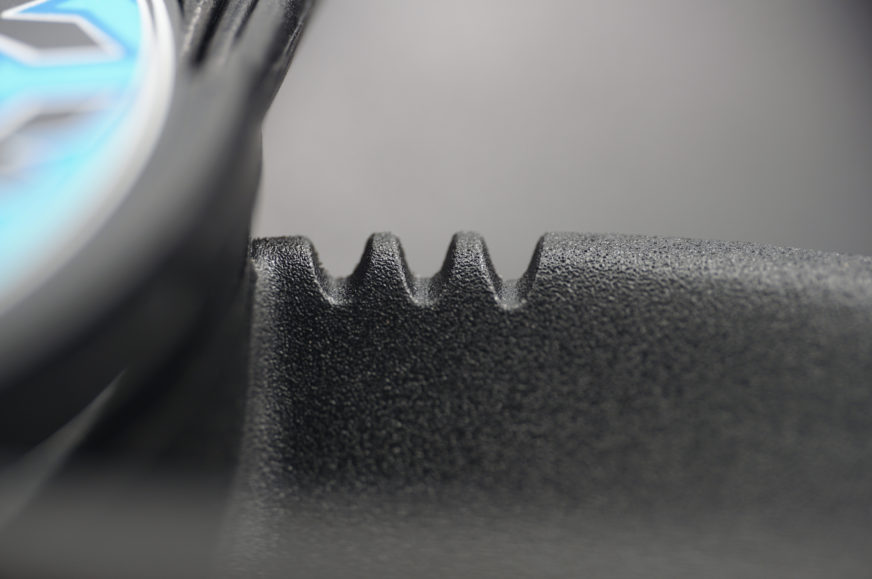
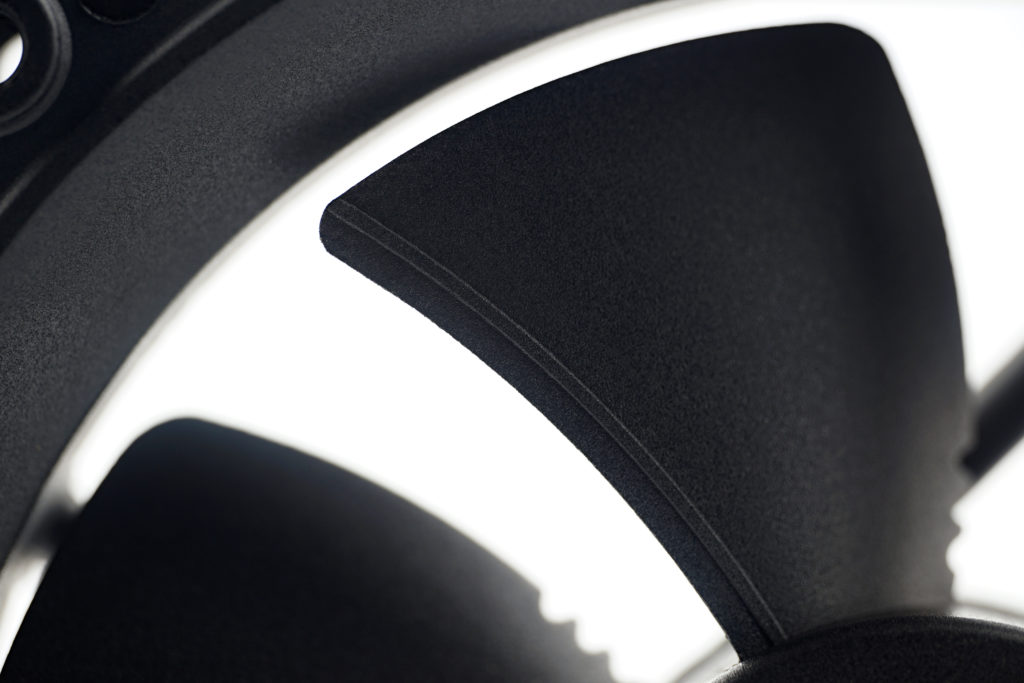
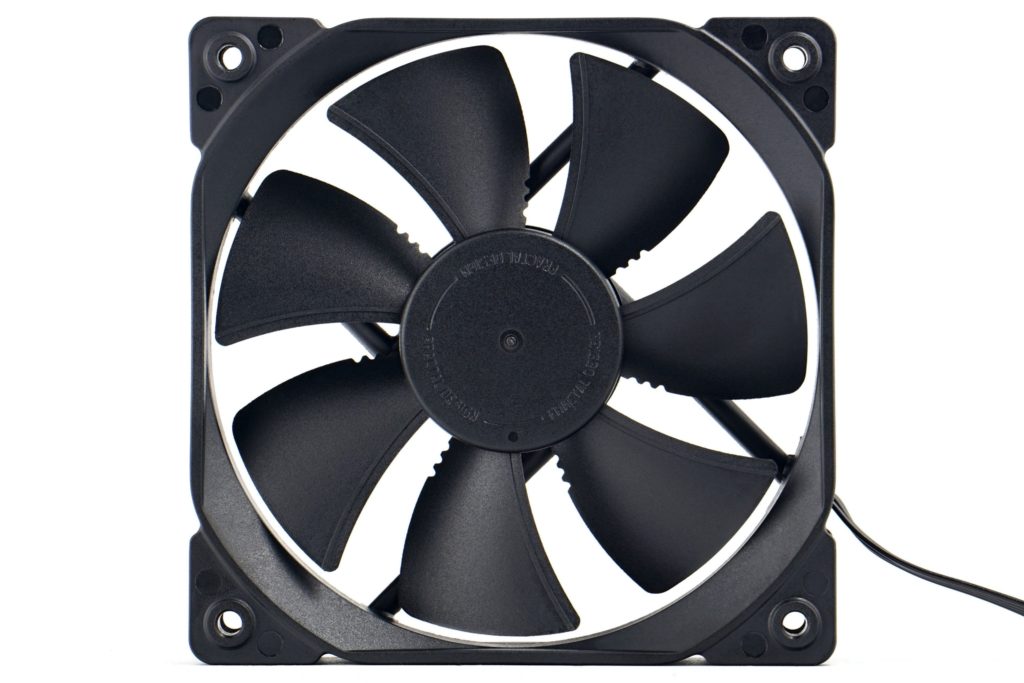
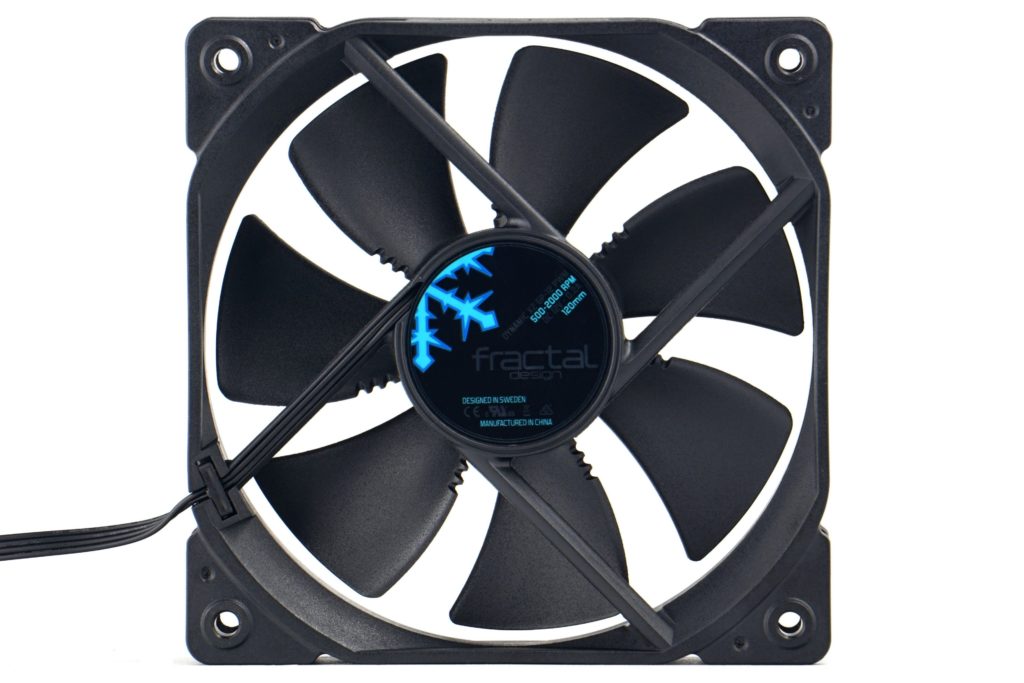
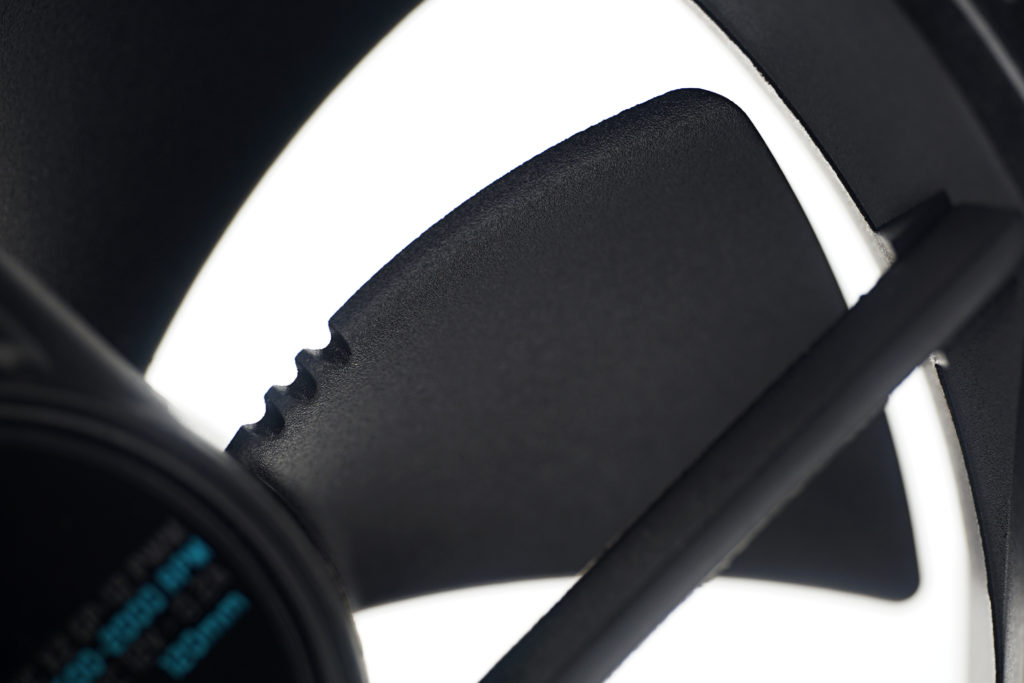







I’m wondering how reviewed fans relate to 140mm version, Dynamic X2 GP-14.
I have three of them mounted as stock fans in Fractal Design Meshify 2 case and 3x Fluctus 120 PWM in drawer.
GP-12 are clearly inferior to Fluctus, but what about 140mm GP-14 vs 120mm Fluctus when used as 2x intake and 1x exhaust case fan?
Sooner or later we will get to such a comment. Anyway, these are structurally completely different designs, where the Fluctus 120 PWM is handicapped by higher tonal peaks at lower frequencies and with the Dynamic X2 GP-14 it might be again (like the Dynamic X2 GP-12 PWM) a relatively noisier, gently whirring motor. We’ll see…